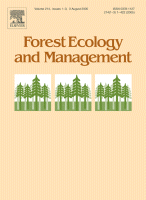| Journal Article |
 |
|
| Article Title | Farmers' perspectives on slash-and-burn as a land clearing method for small-scale rubber producers in Sepunggur, Jambi Province, Sumatra, Indonesia | | Author | Quirine M Ketterings, Titus Tri Wibowo, Meine van Noordwijk and Eric Penot | | Year | 1999 | | Journal Title | Forest Ecology and Management | | Institution | Elsevier | | Volume | 120 | | Issue | 1-3 | | Pages | 157-169 | | Call Number | JA0132-04 | | Keywords | Slash and burn, Shifting cultivation, fire, farmer's survey, social economic, agronomic survey, small rubber producers, Jambi province, Sumatra, Indonesia |
|
| Abstract: |
| On 10 September, 1997, President Soeharto of Indonesia renewed a ban on the practice of burning forests to clear land. At that time a thick haze caused by land-clearing related fires in Kalimantan and Sumatra, Indonesia, blanketed large parts of Indonesia, Malaysia, Singapore, Brunei, the Philippines and Thailand. These fires, aggravated by the El Nino weather pattern and described as the worst in Southeast Asian history, renewed a long-term debate on slash-and-burn (S&B) as a method of land clearing. Acceptable alternatives to S&B should address both the problems and the benefits of the use of fire. A social/economic/agronomic survey was therefore conducted among 37 small-scale rubber producers in Sepunggur, Jambi Province, Sumatra. The objectives were to: (1) characterize S&B techniques; (2) characterize farmers' perspectives on land clearing methods related to agronomic/economic factors (soil fertility, plant growth, production); and (3) evaluate alternatives to S&B that would be acceptable to individual farmers at present and in the near future.
Small rubber producers (average farm size _5 ha) were selected because rubber gardens are the major land use type in this area, small producers are the main contributors, and most of the forest that is presently converted for agricultural use is being planted with rubber seedlings. Farmers generally start slashing in March and burn in the month of August. Burning takes place in 2 steps: broadcast burning followed by piling-and-burning. The 5 advantages of using fire cited by the farmers were: (1) burning creates space (51%); (2) ash acts as a fertilizer (23%); (3) burning improves soil structure, thus enabling faster establishment of seedlings (15%); (4) burning reduces weed/tree competition (5%); and (5) burning reduces the occurrence of pests/diseases (3%). Alternatives to S&B should be economically acceptable. Mulching does not provide an alternative to any of the benefits of burning. Slash-and-remove-wood addresses only the first advantage and requires a tremendous effort in labour. If forced to accept either of these alternatives, farmers expect a reduction in income due to difficulties in establishing new rubber gardens, reductions in yield, and an increase in labour costs. |
|
|
Download file(s): Click icon to download/open file.
|
| |
File Size |
Description |

|
1,887KB |
Softcopy |
|
|
|
| Viewed in 2700 times. Downloaded in 1036 times. |